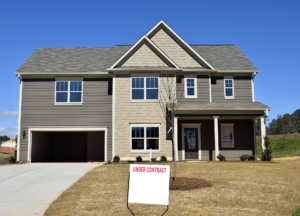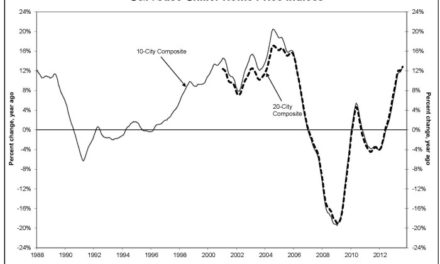 Prices for homes continue to climb, but pending sales dipped again, raising concerns that a tight inventory continues to be a thorn in the side of the housing market. The National Association of Realtors’ Pending Home Sales Index dropped 2.6 percent from the same time last year, and was down the same amount from July 2017.
Prices for homes continue to climb, but pending sales dipped again, raising concerns that a tight inventory continues to be a thorn in the side of the housing market. The National Association of Realtors’ Pending Home Sales Index dropped 2.6 percent from the same time last year, and was down the same amount from July 2017.
Sales of new homes declined 3.4 percent from July, the second month in a row that sales declined and the five time in the last six months. One reason is that home prices continue to push higher. The S&P CoreLogic Case-Shiller U.S. National Home Price NSA Index reported a 5.9 percent increase in July, just barely above June’s 5.8 percent jump.
Home prices are still moving higher, which can be partially attributed to the surplus of buyers shopping for a relatively lower supply of homes. The unemployment rate remains low, and that has enabled more people to start looking for a home. However, with home prices high, younger potential buyers and those with less money available for housing are finding themselves priced out of homes they want to purchase. The median existing home price rose 5.6 percent from the same time last year to $253,000.
As a result, some who might be interested in buying are instead finding themselves renting a home. There are now eight million more homes being rented than in 2007, just prior to the housing crash. Meanwhile, the inventory of homes on the market dropped to 1.88 million units in August. A healthy market generally has a six-month supply of available homes, and the current numbers are for just 4.5 months.
The inventory shortage is nothing new. Even as the market continued to heat up in the last two years, the short supply has been a bit of an anchor, which has led to increased prices and has limited who could jump in and purchase a home. August’s decline was the 27th month in a row that the inventory has dropped.
“A healthy real estate market is made up of a solid inventory that contains homes of varying prices,” said Greenfield Advisors Vice Chairman and Co-Managing Director Dr. Clifford Lipscomb. “When home prices continue to move up while the inventory remains tight, we get a situation similar to what we have now… not enough homes to go around at the prices buyers are willing to pay. As a result, sales volume declines and prices often rise. Now, add to this the fact that we’re approximately ten years into the current real estate cycle, depending on when you start counting, since the Great Recession. Real estate investors are paying attention to the general real estate cycle and as a result real estate developers and funds are staying liquid in this time of tax uncertainty.”
Where do you see the housing market going in the coming months? Let us know in the comments.






Recent Comments